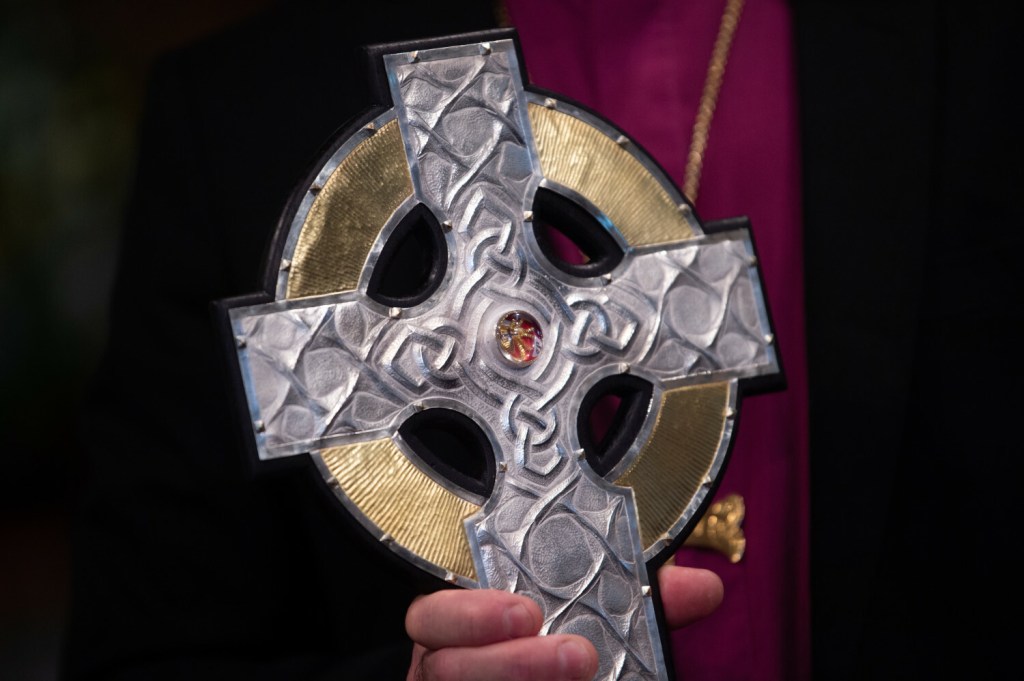The last time a Cardinal attended the coronation of a British King was in the 16th century. Two other high-ranking Catholics will also attend.
Cardinal Pietro Parolin, the Pope’s secretary of state, will represent Pope Francis at the coronation of Charles III, King of the United Kingdom, on May 6, 2023, announced the director of the Holy See Press Office, Matteo Bruni on May 4. This will be the first time since the 16th century that a Cardinal will attend the coronation of a British king in Westminster Abbey in London.
Pope Francis’ ‘number 2’ will not be the only high ranking Catholic representative at the event. The Archbishop of Westminster, Cardinal Vincent Nichols, will also participate in the ceremony inside the cathedral. The Apostolic Nuncio to the United Kingdom, Archbishop Miguel Maury Buendia, is also invited.
Shortly after the formal coronation, performed by the Archbishop of Canterbury, leader of the Anglican Church, Justin Welby, Cardinal Nichols is expected to bless the new King along with other Protestant and Orthodox leaders. The Cardinal will then say to the new leader: “May God pour upon you the riches of his grace, keep you in his holy fear, prepare you for a happy eternity, and receive you at the last into immortal glory.”
However, no Catholics were given any of the 50 positions of honor during the ceremony – unlike Jewish, Sikh and Hindu personalities who are expected to present the regalia, the objects representing royalty.
A defender of the faith
As supreme governor of the Church of England, Charles III will receive the title of “Fidei Defensor” – defender of the faith – which had been conferred on King Henry VIII by Pope Leo X in 1521. Twelve years later, in 1533, the divorce and remarriage of the King of England, without the consent of the Church, led to his excommunication by Pope Clement VII.
As a consequence, Henry VIII provoked a schism in 1534 by getting the English Parliament to recognize him as “the Supreme Head of the Church of England.” Relations with Rome were formally broken off in 1536, but re-established under the reign of Mary I (1553-1558). Her coronation on October 1, 1553, was the last ceremony performed by a Catholic Archbishop – Bishop Stephen Gardiner of Winchester. The last time a Cardinal was present was at the coronation of Mary I as Queen of Scots in 1542.
From then on, Catholics were considered enemies of the national community for several centuries and were barred from Anglican churches until the end of the 20th century. Another sign of anti-Catholicism: Until 1901, at the coronation of Edward VII, the new King had to publicly denounce transubstantiation. The practice was then abandoned.
At the last coronation, that of Queen Elizabeth II in 1953, no Catholic entered the basilica. Archbishop William Godfrey, the Apostolic Nuncio at the time – the first since the Reformation – attended the procession to Westminster Abbey but did not enter. The then Archbishop of Westminster, Cardinal Bernard Griffin, did not attend but celebrated a mass for the Queen the day before the ceremony.
The reign of Elizabeth II helped to ease relations between Anglicans and Catholics, especially after the Second Vatican Council. However, diplomatic ties between the United Kingdom and the Holy See were not restored until 1982.
The Catholic origin of the anointing
One of the most important moments in the ceremony is the anointing, which is performed by the Archbishop of Canterbury while four knights prevent the audience from seeing the sacred ceremony. The head, chest, and hands of the King or Queen are anointed out of sight. The oil to be used on May 6 was consecrated by Orthodox Patriarch Theophilus III at the Holy Sepulchre in Jerusalem on March 4, 2023.
Historically, this anointing was granted by Pope Adrian I to one of the first kings of united England, Offa of Mercia, for his son Ecgfrith in 787. The practice then became customary in the 10th century.
Pope Francis offered two fragments of the Holy Cross to the new King, who asked that they be enshrined in the silver cross to be used during the coronation ceremony. The Holy See said this was an ecumenical gesture desired by the Pontiff.


